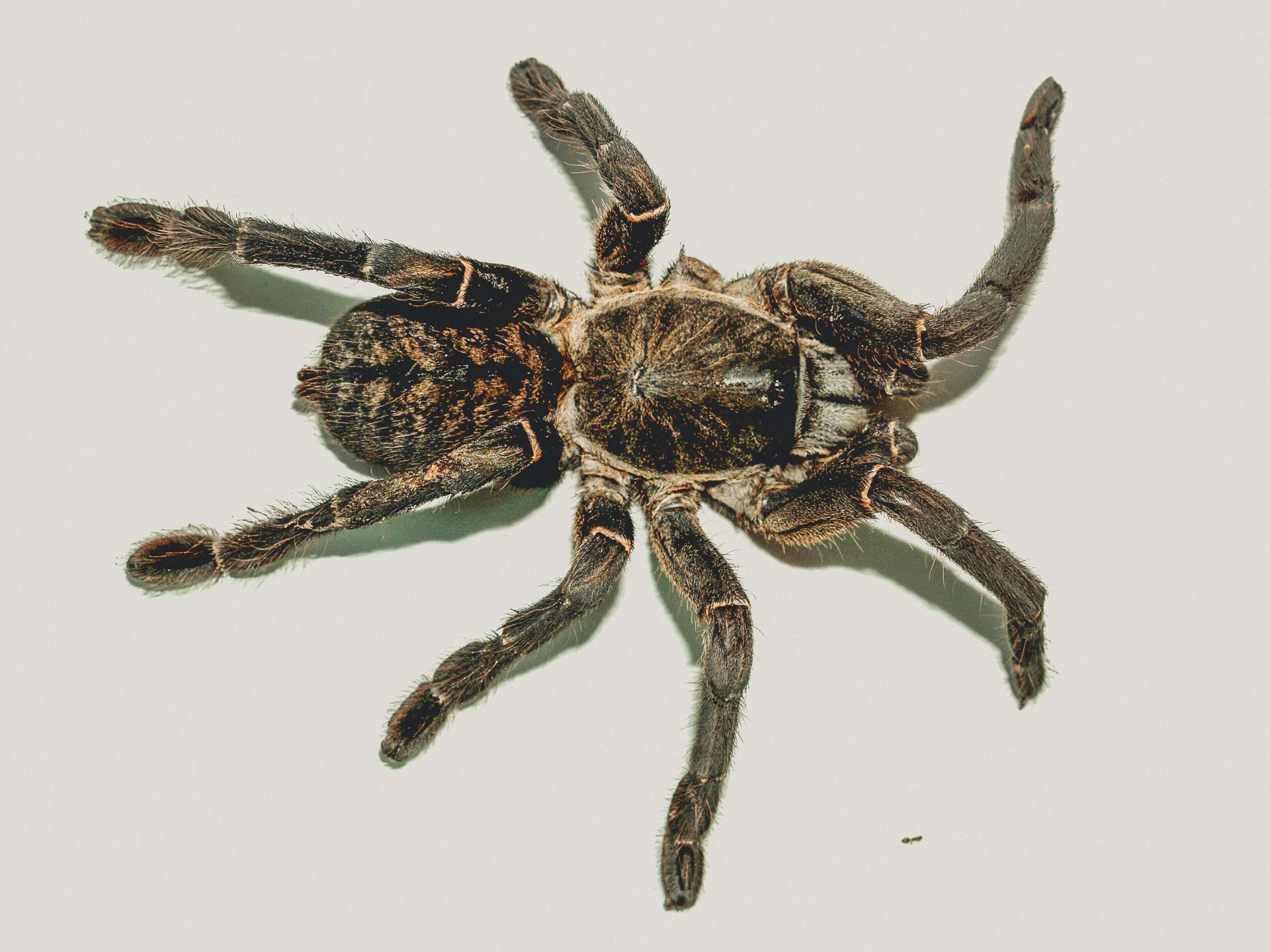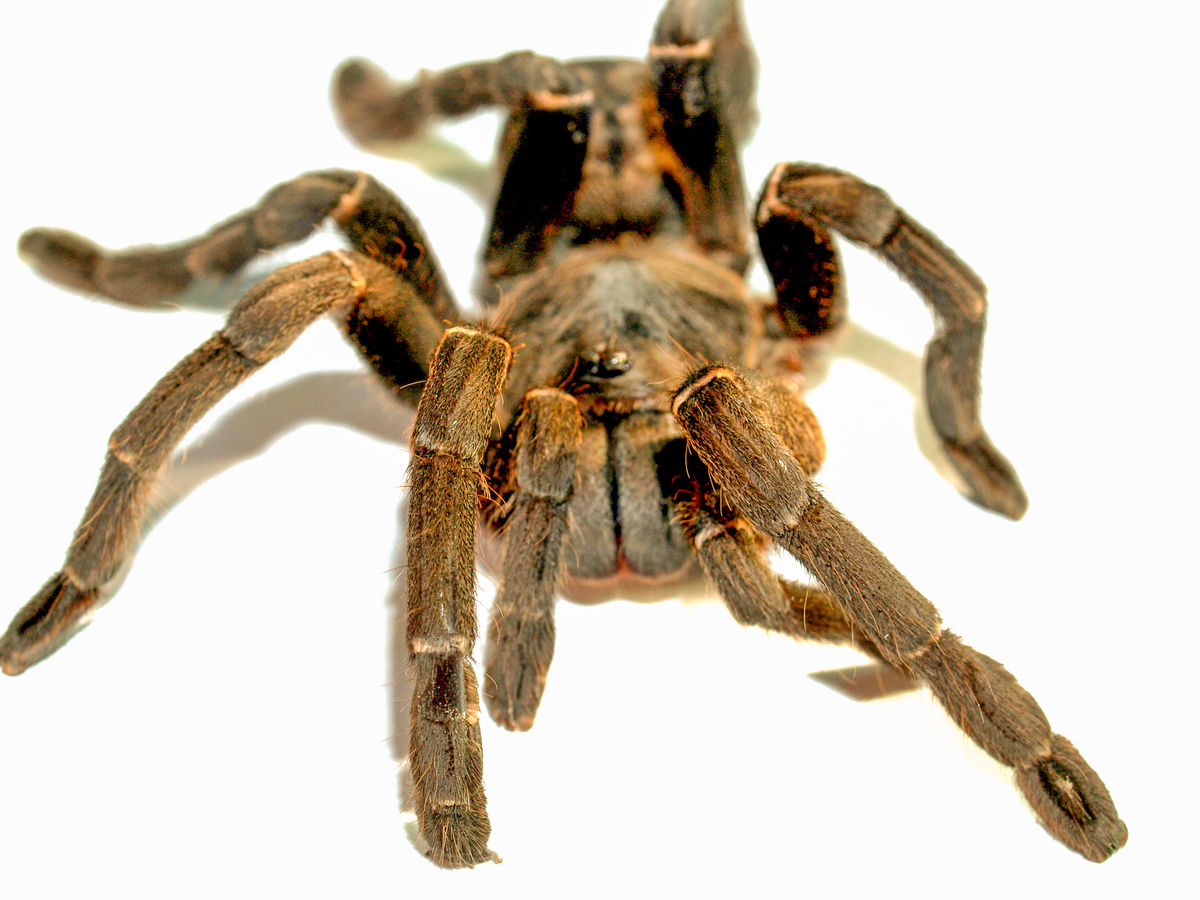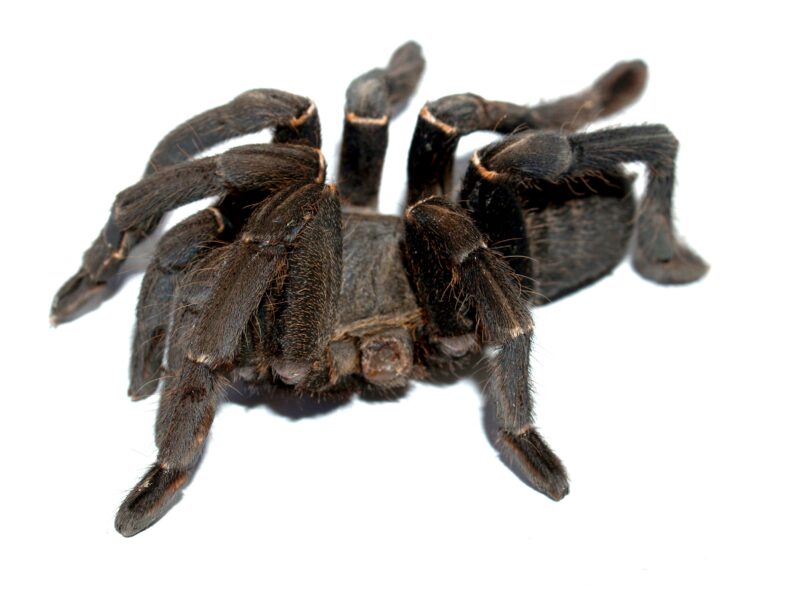Finding your tarantula with a missing leg can be alarming. These resilient spiders sometimes lose limbs due to various reasons. This article will guide you through the steps to help your eight-legged friend heal and adapt.
Keep reading for some essential spider first-aid tips!
Reasons Why Tarantulas May Lose Legs

Tarantulas may lose legs due to physical damage from careless handling, moulting problems, mating aggression, or predator attacks. These reasons can lead to the loss of a leg, affecting the tarantula’s health and mobility.
Physical damage
Physical damage can happen easily if you’re not careful with your tarantula. Rough handling often leads to injuries, including lost legs. Your pet might also get its leg trapped in cage furnishings or during an escape attempt.
It’s crucial to always be gentle and move slowly around them to minimize the risk of an accident.
In cases where a leg gets damaged, swift action makes all the difference. Check for wounds and apply proper care immediately to help your tarantula recover without complications from infection or stress.
Keeping them in a secure, safe environment ensures they have the best chance at healing and possibly regrowing their leg during their next molt cycle.
Moulting problems
While physical damage is a clear cause for concern, moulting problems can also lead to leg loss in tarantulas. Molting complications arise when the natural process of shedding their exoskeleton goes awry.
An ideal temperature and humidity are crucial during this vulnerable time as any fluctuations can result in a trapped leg or incomplete molt. As a tarantula enthusiast, it’s important to understand that the molting process requires careful monitoring.
Tarantulas need a stress-free environment to successfully molt, and disturbance during this period may increase the risk of injury. If you notice your tarantula struggling, resist the urge to assist physically; this could do more harm than good.
Instead, ensure that your pet has optimal conditions for molting by checking on temperature and humidity levels regularly. A well-managed enclosure significantly reduces moulting issues and aides in successful recovery if your spider does lose a limb due to molting complications.
Mating aggression
Moving from the challenges tarantulas face during molting, it’s essential to consider another risk: mating aggression. This natural yet perilous behavior occurs when male tarantulas seek out females to reproduce.
Unfortunately, these encounters can turn violent, leading to lost limbs or worse. Male tarantulas may become aggressive and harm the female in the process, or a female might attack a suitor if she is not receptive.
Understanding this aspect of tarantula behavior is crucial for any enthusiast aiming to breed their spiders safely. To minimize risk, introduce potential mates carefully and monitor their interaction closely.
This vigilance ensures that you can separate them before any damage occurs, further protecting your pet’s wellbeing during this critical time.
Predator attack
Mating aggression can trigger predator attacks on tarantulas. Large spiders, scorpions, and other predatory insects may see the weakened state of a molting or injured tarantula as an opportunity for an easy meal.
These predators are adept at sensing vulnerability and will not hesitate to attack a compromised tarantula.
Ensuring a safe environment is crucial in protecting your pet from potential predator attacks. Keep their habitat secure with tight-fitting lids and sturdy enclosures to prevent any unwelcome visitors from causing harm.
My Tarantula Lost A Leg—Here’s What You Need to Know

Clean the wound with a sterile saline solution, monitor for signs of infection, and provide a safe environment for your tarantula to recover in. To learn more about how to care for your tarantula after losing a leg, keep reading!
Clean the wound
After your tarantula loses a leg, it’s important to clean the wound thoroughly with non-alcoholic antiseptic wipe. This helps in the healing process.
- Gently remove any dirt or debris from the wound using a soft, clean cotton swab.
- If there is any bleeding, apply gentle pressure with a clean gauze pad until it stops.
- Monitor the wound closely and look for mites.
Monitor for mites
After cleaning the wound, it’s important to monitor for infection to ensure your tarantula heals properly. Keep an eye out for any signs of mites around the wound. If you notice any of these clean these areas manually and put your tarantula into a safe environment.
- Examine the wound daily and note any changes in appearance.
- Be vigilant for any unusual behavior such as decreased appetite or lethargy, which could indicate an underlying infection.
- Maintain a clean and hygienic enclosure to prevent bacteria from causing complications.
- Ensure appropriate temperature and humidity levels to promote healing and minimize the risk of infection.
- Seek professional advice if there are any concerns about the healing process.
Provide a safe environment
After monitoring for infection, it is essential to provide a safe environment for your tarantula to aid in the healing process. Here are some crucial steps to ensure your tarantula receives the necessary care:
- Maintain ideal temperature and humidity levels in the tarantula’s habitat to promote healing and reduce stress.
- Ensure that the enclosure is free from sharp or rough surfaces that could cause further injury to the tarantula.
- Minimize disturbances and handle the tarantula with care to prevent any additional stress or injuries.
- Avoid exposing the tarantula to potential predators or aggressive tank mates during its recovery period.
- Monitor its feeding schedule and adjust as needed to support its overall health and wellbeing.
Do Tarantulas Regrow Their Legs?
– Tarantulas are able to regrow lost legs through a process called regeneration, which occurs during molting.
– When a tarantula loses a leg, it will start to regenerate a new one during its next molt.
– Regeneration begins with the formation of a small bud at the site of the missing leg on the tarantula’s exoskeleton.
– Over time, this bud develops into a fully functional and proportionate replacement leg.
Conclusion
In conclusion, prompt action is crucial if your tarantula loses a leg. Clean the wound and monitor for any signs of infection. Ensure a safe environment with ideal temperature and humidity to aid healing.
Remember that with proper care, many tarantulas can regenerate lost legs over time.
FAQs
1. What should I do if my tarantula loses a leg?
If your tarantula loses a leg, ensure its environment is clean and provide easy access to water. Monitor for signs of stress or infection.
2. Will my tarantula’s lost leg grow back?
In most cases, a tarantula’s lost leg will not regrow completely, but it may partially regenerate during molting over time.
3. Can I help my tarantula if it loses a leg?
You can aid in the recovery process by maintaining optimal living conditions and ensuring the availability of food and water for your pet.
4. Is it necessary to visit a veterinarian if my tarantula loses a leg?
Unless there are complications such as infection or excessive bleeding, visiting a veterinarian may not be required as long as you provide proper care at home.
5. How long does it take for a tarantula to adjust after losing a leg?
It may take several weeks for your tarantula to adjust physically and behaviorally after losing a leg, so observe its movements and feeding habits closely during this period.







